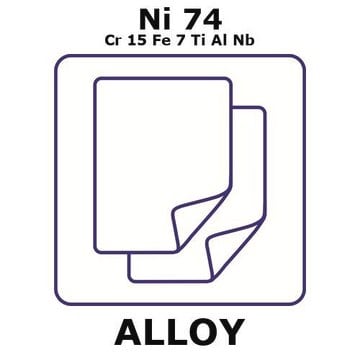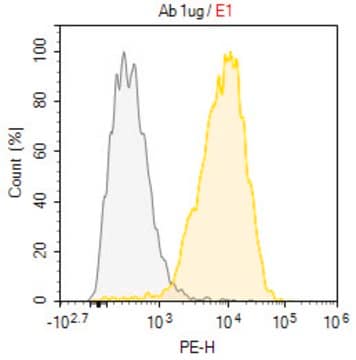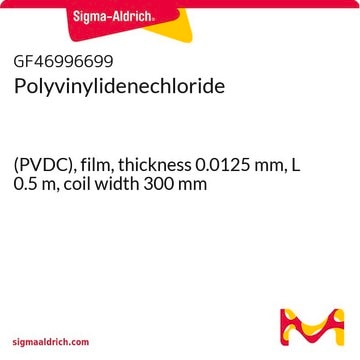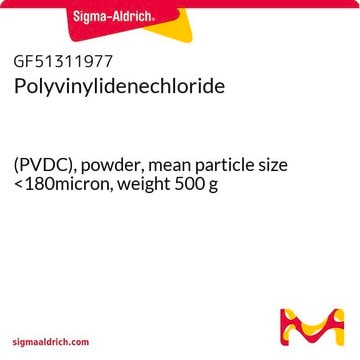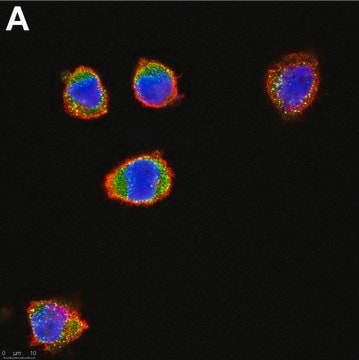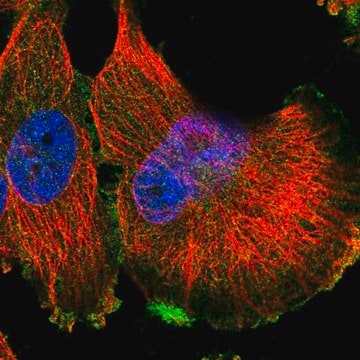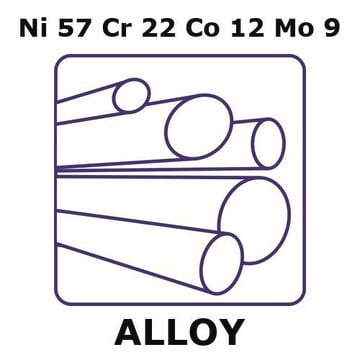GF51626831
Molybdenum
rod, 100mm, diameter 2.0mm, centerless ground, 99.9%
Sinonimo/i:
Molybdenum, MO007903
Autenticatiper visualizzare i prezzi riservati alla tua organizzazione & contrattuali
About This Item
Formula empirica (notazione di Hill):
Mo
Numero CAS:
Peso molecolare:
95.94
Numero MDL:
Codice UNSPSC:
12141727
ID PubChem:
NACRES:
NA.23
Prodotti consigliati
Saggio
99.9%
Stato
rod
Produttore/marchio commerciale
Goodfellow 516-268-31
Resistività
5.0 μΩ-cm, 20°C
L × diam.
100 mm × 2.0 mm
P. ebollizione
4612 °C (lit.)
Punto di fusione
2617 °C (lit.)
Densità
10.3 g/mL at 25 °C (lit.)
Stringa SMILE
[Mo]
InChI
1S/Mo
ZOKXTWBITQBERF-UHFFFAOYSA-N
Descrizione generale
For updated SDS information please visit www.goodfellow.com.
Note legali
Product of Goodfellow
Scegli una delle versioni più recenti:
Certificati d'analisi (COA)
Lot/Batch Number
It looks like we've run into a problem, but you can still download Certificates of Analysis from our Documenti section.
Se ti serve aiuto, non esitare a contattarci Servizio Clienti
Possiedi già questo prodotto?
I documenti relativi ai prodotti acquistati recentemente sono disponibili nell’Archivio dei documenti.
Guenter Schwarz et al.
Metal ions in life sciences, 13, 415-450 (2014-01-29)
Molybdenum is an essential trace element and crucial for the survival of animals. Four mammalian Mo-dependent enzymes are known, all of them harboring a pterin-based molybdenum cofactor (Moco) in their active site. In these enzymes, molybdenum catalyzes oxygen transfer reactions
Bernd Masepohl et al.
Advances in experimental medicine and biology, 675, 49-70 (2010-06-10)
The vast majority of the purple nonsulfur photosynthetic bacteria are diazotrophs, but the details of the complex regulation of the nitrogen fixation process are well understood only for a few species. Here we review what is known of the well-studied
Tingyu Shi et al.
Journal of cellular biochemistry, 112(10), 2721-2728 (2011-06-17)
When intracelluar pathogens enter the host macrophages where in addition to oxidative and antibiotic mechanisms of antimicrobial activity, nutrients are deprived. Human pathogen Mycobacterium tuberculosis is one of macrophage parasitisms, which can replicate and persist for decades in dormancy state
Lidia Regoli et al.
The Science of the total environment, 435-436, 96-106 (2012-08-01)
In a regulatory context, bioaccumulation or bioconcentration factors are used for considering secondary poisoning potential and assessing risks to human health via the food chain. In this paper, literature data on the bioaccumulation of molybdenum in the aquatic organisms are
Ralf R Mendel et al.
Biochimica et biophysica acta, 1823(9), 1568-1579 (2012-03-01)
The transition element molybdenum (Mo) needs to be complexed by a special cofactor in order to gain catalytic activity. With the exception of bacterial Mo-nitrogenase, where Mo is a constituent of the FeMo-cofactor, Mo is bound to a pterin, thus
Il team dei nostri ricercatori vanta grande esperienza in tutte le aree della ricerca quali Life Science, scienza dei materiali, sintesi chimica, cromatografia, discipline analitiche, ecc..
Contatta l'Assistenza Tecnica.
